
Our Final Invention: Artificial Intelligence and the End of the Human Era
by
James Barrat
Published 30 Sep 2013
Even if all the governments of the world were to understand the “threat” and be in deadly fear of it, progress toward the goal would continue. In fact, the competitive advantage—economic, military, even artistic—of every advance in automation is so compelling that passing laws, or having customs, that forbid such things merely assures that someone else will. —Vernor Vinge, The Coming Technological Singularity, 1993 This quotation sounds like a fleshed-out version of I. J. Good’s biographical aside, doesn’t it? Like Good, two-time Hugo Award-winning science fiction author and mathematics professor Vernor Vinge alludes to humans’ lemminglike predilection to chase glory into the cannon’s mouth, to borrow Shakespeare’s phrase.
…
Vinge told me he’d never read Good’s self-penned biographical paragraphs, or learned about his late-in-life change of heart about the intelligence explosion. Probably only Good, and Leslie Pendleton, knew about it. Vernor Vinge was the first person to formally use the word “singularity” when describing the technological future—he did it in a 1993 address to NASA, entitled “The Coming Technological Singularity.” Mathematician Stanislaw Ulam reported that he and polymath John von Neumann had used “singularity” in a conversation about technological change thirty-five years earlier, in 1958. But Vinge’s coinage was public, deliberate, and set the singularity ball rolling into the hands of Ray Kurzweil and what is today a Singularity movement.
…
J., ed., The Scientist Speculates, an Anthology of Partly Baked Ideas (London: William Heinemann, Ltd. 1962.) Speculations Concerning: Good, I. J., The 1998 “Computer Pioneer Award” of the IEEE Computer Society, Biography and Acceptance Speech (1998), 8. 8: THE POINT OF NO RETURN But if the technological Singularity: Vinge, Vernor, “The Coming Technological Singularity,” 1993, http://www-rohan.sdsu.edu/faculty/vinge/misc/WER2.html. This quotation sounds a lot: Could Good have read Vinge’s essay, inspired by his own earlier essay, and then had a change of heart? I find that unlikely. By his death Good had published some three million words of scholarship.
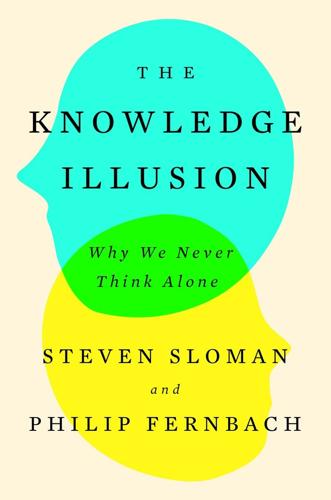
The Knowledge Illusion
by
Steven Sloman
Published 10 Feb 2017
People like Elon Musk, Stephen Hawking, and Bill Gates have cautioned that technology could become so sophisticated that it decides to pursue its own goals rather than the goals of the humans who created it. The reason to worry has been articulated by Vernor Vinge in a 1993 essay entitled “The Coming Technological Singularity,” as well as by Ray Kurzweil in his 2005 book The Singularity Is Near: When Humans Transcend Biology, and most recently by Swedish philosopher Nick Bostrom, who works at the University of Oxford. In Bostrom’s language, the fear is that technology is advancing so fast that the development of a superintelligence is imminent.
…
THINKING WITH TECHNOLOGY commuting a little less: www.governing.com/topics/transportation-infrastructure/how-america-stopped-commuting.html. attendance at movie theaters: www.slashfilm.com/box-office-attendance-hits-lowest-level-five-years. Vernor Vinge: V. Vinge (1993). “The Coming Technological Singularity.” Whole Earth Review, Winter. Ray Kurzweil: R. Kurzweil (2005). The Singularity Is Near: When Humans Transcend Biology. New York: Penguin Books. Nick Bostrom: N. Bostrom (2014). Superintelligence: Paths, Dangers, Strategies. Oxford, UK: Oxford University Press. Ian Tattersall: As told to Dan Falk in the online magazine eon: http://eon.co/magazine/science/was-human-evolution-inevitable-or-a-matter-of-luck.
…
See also artificial intelligence (AI); thought body-brain cooperation in cognitive processing, 101–05 collective mind, 5–6 CRT (Cognitive Reflection Test), 80–84 division of cognitive labor, 14, 109–11, 120–21, 128–29 illusion of understanding, 8, 15 individual limitations, 4–5, 15 Landauer, Thomas, 24–26 the mind compared to a computer, 24–27 moving text window example, 93–95 origins of, 4 Turing, Alan, 25 collaboration, 14, 109–11, 115–18, 121–22, 149–50, 226 collective intelligence hypothesis, 209–10 combinatorial explosion, 34 “The Coming Technological Singularity” (Vinge), 132 communal learning Brown, Ann, 228–30 Fostering Communities of Learners program, 228–30 group/regroup strategy, 228–30 jigsaw method, 229–30 communication language, 113–14 non-verbal, 114–15, 117 community development of, 112–13 intelligence, 259 responsibility, 259–61 community of knowledge, 80, 200, 206–14, 221, 223–27, 241–42 compatibility of different group members’ knowledge, 126 complexity airplane example, 28 beehive example, 107–08, 113–14 car example, 28 chaos theory, 34–35 class reunion example, 31 combinatorial explosion, 34 fractals, 33–34 hairpin example, 34 of the human brain, 29–30 military strategy, 32–33 in the natural world, 29–31 of politics, 16 recognizing, 35 reducing, 250 of technology, 134–35 weather prediction, 30–31 comprehension illusion of, 217–18 inverted text example, 217 Pledge of Allegiance example, 217–18 “Purple Haze” example, 218 computer checkers example of testing intelligence of a team, 210–11 “Computing Machinery and Intelligence” (Turing), 25 consequences of tiny changes.

The Transhumanist Reader
by
Max More
and
Natasha Vita-More
Published 4 Mar 2013
Hibbert “Diverse goods arbitration system and method for allocation resources in a distributed computer system” (Sun Microsystems, 1997); and with Norman Hardy, Linda L. Vetter “System and method for generating unique secure values for digitally signing documents” (2000). Vernor Vinge, PhD, is former Professor of Mathematics, University of California San Diego. He authored A Fire Upon the Deep (Tor, 1993, 2011); “The Coming Technological Singularity: How to Survive in the Post-Human Era” (Whole Earth Review, 1993); and True Names … and Other Dangers (Baen Book, 1987). Natasha Vita-More, PhD, is Professor of Design University of Advancing Technology, co-founder, Institute for Transhumanism, chairman of Humanity+, and co-editor of The Transhumanist Reader.
…
Various (2003) “The Transhumanist FAQ: v 2.1.” World Transhumanist Association. http://humanityplus.org/philosophy/transhumanist-faq/. Verdoux, Philippe (2009) “Transhumanism, Progress and the Future.” Journal of Evolution and Technology 20/2 (December), pp. 49–69. Vinge, Vernor (1993) “The Coming Technological Singularity.” Whole Earth Review (Winter). Vita-More, Natasha (1983) “Transhuman Manifesto.” http://www.transhumanist.biz/transhumanmanifesto.htm. Vita-More, Natasha (1992) “Transhumanist Arts Statement.” Revised 2002. http://www.transhumanist.biz/transhumanistartsmanifesto.htm. Further Reading Bell, T.
…
More, Max (2009) “Singularity and Surge Scenarios.” http://strategicphilosophy.blogspot.com/2009/06/how-fast-will-future-arrive-how-will.html (accessed October 30, 2011). Sandberg, Anders and Bostrom, Nick (2008) Whole Brain Emulation: A Roadmap. Technical Report #2008-3. Future of Humanity Institute, Oxford University. Vinge, Vernor (1993) “The Coming Technological Singularity: How to Survive in the Post-Human Era.” Whole Earth Review (Winter). Walter, Henrik (2001) The Neurophilosophy of Free Will. Cambridge, MA: MIT Press. Wegner, Daniel (2002) The Illusion of Conscious Will. Cambridge, MA: MIT Press. Yudkowsky, E. (2008) “Artificial Intelligence as a Positive and Negative Factor in Global Risk.”

Rise of the Robots: Technology and the Threat of a Jobless Future
by
Martin Ford
Published 4 May 2015
The Singularity The first application of the term “singularity” to a future technology-driven event is usually credited to computer pioneer John von Neumann, who reportedly said sometime in the 1950s that “ever accelerating progress . . . gives the appearance of approaching some essential singularity in the history of the race beyond which human affairs, as we know them, could not continue.”5 The theme was fleshed out in 1993 by San Diego State University mathematician Vernor Vinge, who wrote a paper entitled “The Coming Technological Singularity.” Vinge, who is not given to understatement, began his paper by writing that “[w]ithin thirty years, we will have the technological means to create superhuman intelligence. Shortly after, the human era will be ended.”6 In astrophysics, a singularity refers to the point within a black hole where the normal laws of physics break down.
…
Yann LeCun, Google+ Post, October 28, 2013, https://plus.google.com/+YannLeCunPhD/posts/Qwj9EEkUJXY. 4. Gary Marcus, “Hyping Artificial Intelligence, Yet Again,” New Yorker (Elements blog), January 1, 2014, http://www.newyorker.com/online/blogs/elements/2014/01/the-new-york-times-artificial-intelligence-hype-machine.html. 5. Vernor Vinge, “The Coming Technological Singularity: How to Survive in the Post-Human Era,” NASA VISION-21 Symposium, March 30–31, 1993. 6. Ibid. 7. Robert M. Geraci, “The Cult of Kurzweil: Will Robots Save Our Souls?,” USC Religion Dispatches, http://www.religiondispatches.org/archive/culture/4456/the_cult_of_kurzweil%3A_will_robots_save_our_souls/. 8.
…
See collateralized debt obligations (CDOs) Center for Economic and Policy Research, 171n Central Intelligence Agency, 46, 85 cervical cancer screening, 152–153 chargemaster prices, 160–161, 164 cheating, MOOCs and, 136–137 Cheney, Dick, 240 chess, 97–98, 122, 123 Chicago, data portal of city of, 87–88 China American consumer spending and, 54 college graduates overqualified for occupations in, 251 consumer demand in, 223–227 globalization and, 53 industrial automation in, 3, 10–11, 225–226 labor’s share of national income in, 41 offshoring and, 120 reshoring and, 9 saving rate in, 224–225 super-intelligence and, 236n China rebalancing, 224–225 Chomsky, Noam, 129, 236 Christensen, Clayton, 142 Chronicle of Higher Education (journal), 139 Chrysler, 76 Circuit City, 16 Cisco, 234 Citigroup, 103, 198 citizen’s dividend, 266–267 Cleveland Clinic, 102 Clifford, Stephanie, 8 climate change, xvii, 211–212, 282–283 Clinton, Bill, 242 cloud computing, 52, 104–107, 109 cloud robotics, 20–23 cobalt poisoning, 145–146 cognitive capability, global competition for jobs and, 120 cognitive computer chip, 72 cognitive computing, 96–104 collaboration software, 64 Collapse: How Societies Choose to Succeed or Fail (Diamond), x collateralized debt obligations (CDOs), 56 college-educated workers, 120–121, 126–128 college graduates, declining income and underemployment for recent, 48–49 College Unbound (Selingo), 140 college wage premium, 48n Colton, Simon, 112 “The Coming Technological Singularity” (Vinge), 233 community colleges, 276–277 comparative advantage, 73–75 compensation. See wages competency-based education (CBE), 138 computers acceleration of power, xii–xiii, 68 (see also Moore’s Law) acquisition of skills by, xv–xvi increase in memory capacity, 63–64 innovation and improvements in, 69–73 predictions of impact of, 31–32, 33–34 S-curve of, 69, 70–71 construction industry, 3D printing and, 180–181 Consumer Price Index (CPI), 38n consumer robots, 197n consumers Chinese, 223–227 demand and, 196–197 permanent income hypothesis, 210–211 workers as, 193–194, 196–198, 221–222 consumer spending, 54 consumer spending/consumption, 200, 202n demand and, 196 guaranteed income and, 269–270 income inequality and, xvi–xvii, 198–202 Cornell University, Creative Machines Lab, 108 corporate profits financial sector, 55 recovery from Great Recession and, 39–40, 202, 203 as share of GDP, 40, 202, 203 correlation vs. cause, big data and, 88–89, 102 costs health care, 160–174 higher education, 140 Coursera, 133, 136 Cowen, Tyler, 65, 123, 126n CPI.

In Our Own Image: Savior or Destroyer? The History and Future of Artificial Intelligence
by
George Zarkadakis
Published 7 Mar 2016
Oxford: Oxford University Press. 21Tegmark, M. (2014), ‘Humanity in Jeopardy’, in: Huffington Post, 13 January 2014. 22Tegmark, N., Hawking, S., Russell, S., and Wilczek, F. (2014), ‘Transcendence looks at the implications of artificial intelligence – but are we taking AI seriously enough?’, in: Independent, 1 May 2014. 23Vinge, V. (1993), ‘The coming technological singularity: how to survive in the post-human era’, presented at: the VISION-21 Symposium sponsored by NASA Lewis Research Center and the Ohio Aerospace Institute, 30–31 March, 1993. 24Vinge, V. (1993), ‘The coming technological singularity: how to survive in the post-human era’, presented at: the VISION-21 Symposium sponsored by NASA Lewis Research Center and the Ohio Aerospace Institute, 30–31 March, 1993. 25Kurzweil, R. (1999), The Age of Spiritual Machines, New York: Viking Penguin. 26Dowe, D.
…
L., and Herandez-Oralli, J. (2011), ‘IQ tests are not for machines, yet’, in: Intelligence, March–April 2012, Vol. 40, No. 2, pp. 77–81. 27Although Earth, as a cybernetic system, acts in an ‘intelligent’ way through constant adaptation and self-regulation, a concept explored by James Lovelock in his Gaia hypothesis. 28Vinge, V. (1993), ‘The coming technological singularity: how to survive in the post-human era’, presented at: the VISION-21 Symposium sponsored by NASA Lewis Research Center and the Ohio Aerospace Institute, 30–31 March, 1993. 29At the time this book was written in 2014 the fastest computer in the world was the Chinese Tianhe-2, located at Sun Yatsen University, Guangzhou, China.

Thinking Machines: The Inside Story of Artificial Intelligence and Our Race to Build the Future
by
Luke Dormehl
Published 10 Aug 2016
, it told the pulpy story of a brain which is artificially augmented by being plugged directly into computerised data sources. This was the first published work of Vernor Vinge, a sci-fi writer, mathematics professor and computer scientist with a name straight out of the Marvel Comics alliteration camp. Vinge later became a successful novelist, but he remains best known for his 1993 non-fiction essay, ‘The Coming Technological Singularity’. The essay recounts many of the ideas Good had posed about superintelligent machines, but with the added bonus of a timeline. ‘Within thirty years, we will have the technological means to create superhuman intelligence,’ Vinge famously wrote. ‘Shortly after, the human era will be ended.’
…
Billions Fewer than We Thought’, Guardian, 28 February 2012: theguardian.com/science/blog/2012/feb/28/how-many-neurons-human-brain 10 Stoller-Conrad, Jessica, ‘Controlling a Robotic Arm with a Patient’s Intentions’, Caltech, 21 May 2015: caltech.edu/news/controlling-robotic-arm-patients-intentions-46786 11 Kever, Jeannie, ‘Researchers Build Brain-Machine Interface to Control Prosthetic Hand’, University of Houston, 31 March 2015: uh.edu/news-events/stories/2015/March/0331BionicHand.php 12 Kurzweil, Ray, ‘The Law of Accelerating Returns’, 7 March 2001: kurzweilai.net/the-law-of-accelerating-returns 13 Linden, David, ‘The Singularity Is Far: A Neuroscientist’s View’, BoingBoing, 14 July 2011: http://boingboing.net/2011/07/14/far.html 14 http://2045.com/press/ 15 Hayworth, Ken, ‘Killed by Bad Philosophy’, Brain Preservation Foundation, January 2010: brainpreservation.org/content-2/killed-bad-philosophy/ Chapter 8: The Future (Risks) of Thinking Machines 1 Cook, James, ‘Elon Musk: Robots Could Start Killing Us All Within 5 Years’, Business Insider, 17 November 2014: uk.businessinsider.com/elon-musk-killer-robots-will-be-here-within-five-years-2014–11 2 Hern, Alex, ‘Elon Musk Says He Invested in DeepMind Over “Terminator” Fears’, Guardian, 18 June 2014: theguardian.com/technology/2014/jun/18/elon-musk-deepmind-ai-tesla-motors 3 Hawking, Stephen et al., ‘Stephen Hawking: “Transcendence Looks at the Implications of Artificial Intelligence … ”’, Independent, 1 May 2014: independent.co.uk/news/science/stephen-hawking-transcendence-looks-at-the-implications-of-artificial-intelligence-but-are-we-taking-9313474.html 4 Hill, Doug, ‘The Eccentric Genius Whose Time May Have Finally Come (Again)’, Atlantic, 11 June 2014: theatlantic.com/technology/archive/2014/06/norbert-wiener-the-eccentric-genius-whose-time-may-have-finally-come-again/372607/ 5 Good, I. J., ‘Speculations Concerning the First Ultraintelligent Machine’, Advances in Computers, 1965. 6 Vinge, Vernor, ‘The Coming Technological Singularity: How to Survive in the Post-Human Era’, Vision-21: Interdisciplinary Science and Engineering in the Era of Cyberspace, 1993. 7 Ulam, Stanislaw, ‘Tribute to John von Neumann,’ Bulletin of the American Mathematical Society: 5, May 1958. 8 Hemingway, Ernest, The Sun Also Rises (New York: Scribner, 1954). 9 Appleyard, Bryan, The Brain Is Wider than the Sky: Why Simple Solutions Don’t Work in a Complex World (London: Weidenfeld & Nicholson, 2011). 10 www.youtube.com/watch?

What Algorithms Want: Imagination in the Age of Computing
by
Ed Finn
Published 10 Mar 2017
Arbesman and Christakis, “Eurekometrics”; Evans and Foster, “Metaknowledge”; Waltz and Buchanan, “Computer Science. Automating Science.” 72. Strogatz, “The End of Insight”; Arbesman, “Explain It to Me Again, Computer.” 73. Bostrom, Superintelligence: Paths, Dangers, Strategies; Vinge, “The Coming Technological Singularity: How to Survive in the Post-Human Era.” 74. Golumbia, The Cultural Logic of Computation, 4–5. 75. Ibid., 8. 76. Turner, From Counterculture to Cyberculture, 2. 77. Gillespie, “The Relevance of Algorithms”; Pariser, The Filter Bubble; Galloway, Protocol. 78. Turner, From Counterculture to Cyberculture, 17. 79.
…
Journal for Cultural Research 13 (2) (April 2009): 125–141. doi: 10.1080/14797580902786473. “Video Streaming Services Could Make More Money than the US Box Office by 2017.” The Verge, June 4, 2014. http://www.theverge.com/2014/6/4/5781104/netflix-and-peers-will-make-more-money-than-box-office-by-2017. Vinge, Vernor. “The Coming Technological Singularity: How to Survive in the Post-Human Era.” Proceedings of Vision-21 Symposium. NASA Lewis Research Center: NASA, March 30, 1993. http://ntrs.nasa.gov/archive/nasa/casi.ntrs.nasa.gov/19940022855.pdf. Wallenstein, Andrew. “‘House of Cards’ Binge-Watching: 2% of U.S. Subs Finished Entire Series Over First Weekend” Variety.

Wired for War: The Robotics Revolution and Conflict in the 21st Century
by
P. W. Singer
Published 1 Jan 2010
Singer, December 7, 2006. 103 “the laws of science and our ability” As quoted in Garreau, Radical Evolution, 72. 103 “Google all the time” Peter Moon, “AI Will Surpass Human Intelligence After 2020,” TTworld.com, May 3, 2007 (cited May 30, 2007); available at http://www.itworld.com/Tech/3494/070503ai2020/. 103 “the Internet-based cognitive tools” Vernor Vinge, Rainbows End (New York: Tor Books, 2006), 5. 103 “The Coming Technological Singularity” Vernor Vinge, “The Coming Technological Singularity: How to Survive in the Post-Human Era” (paper presented at the VISION-21 Symposium, March 30-31, 1993). 103 “within thirty years” Ibid. 103 “point where our old models” Ibid. 104 “We are on the edge of change” Vinge, as quoted in Garreau, Radical Evolution, 71-72. 104 “It’s a future period” Kurzweil, The Singularity Is Near, 7. 104 “It’s not merely a technology” Robert Epstein, interview, Peter W.
…
Vinge doesn’t dedicate the book to his wife or parents or cat. Instead, perhaps sucking up to our future owners, he dedicates it to “the Internet-based cognitive tools that are changing our lives—Wikipedia, Google, eBay, and the others of their kind, now and in the future.” In 1993, Vinge authored a seminal essay. The title he chose, “The Coming Technological Singularity: How to Survive in the Post-Human Era,” pretty much says it all. Vinge described the ongoing explosion in computing power and projected that “within thirty years, we will have the technological means to create superhuman intelligence. Shortly thereafter, the human era will be ended.”
…
Singer, December 7, 2006. 103 “the laws of science and our ability” As quoted in Garreau, Radical Evolution, 72. 103 “Google all the time” Peter Moon, “AI Will Surpass Human Intelligence After 2020,” TTworld.com, May 3, 2007 (cited May 30, 2007); available at http://www.itworld.com/Tech/3494/070503ai2020/. 103 “the Internet-based cognitive tools” Vernor Vinge, Rainbows End (New York: Tor Books, 2006), 5. 103 “The Coming Technological Singularity” Vernor Vinge, “The Coming Technological Singularity: How to Survive in the Post-Human Era” (paper presented at the VISION-21 Symposium, March 30-31, 1993). 103 “within thirty years” Ibid. 103 “point where our old models” Ibid. 104 “We are on the edge of change” Vinge, as quoted in Garreau, Radical Evolution, 71-72. 104 “It’s a future period” Kurzweil, The Singularity Is Near, 7. 104 “It’s not merely a technology” Robert Epstein, interview, Peter W. Singer, Washington, DC, October 25, 2006. 104 “fits many of our happiest dreams” Vinge, “The Coming Technological Singularity: How to Survive in the Post-Human Era.” 104 “physical extinction of the human race” Ibid. 104 “the very nature of what it means to be human” “About the Book,” Singularity.com (cited May 29, 2007); available at http://singularity.com/aboutthebook.html. 105 “the non-biological intelligence” Kurzweil, The Singularity Is Near, 136. 105 “The Rapture for Nerds” Charles Stross, “Singularity: A Tough Guide to the Rapture of the Nerds,” 2005 (cited January 28, 2008); available at http://www.antipope.org/charlie/toughguide.html. 105 “By 2030 we are likely to” Bill Joy, “Forfeiting the Future,” Resurgence, no. 208 (2001), http://www.resurgence.org/resurgence /issues /joy208.htm. 105 “By the way, Joy’s thesis is spot-on” Special forces officer, interview, Peter W.

Ghost Road: Beyond the Driverless Car
by
Anthony M. Townsend
Published 15 Jun 2020
Ann Arbor, MLive, October 6, 2017, https://www.mlive.com/news/ann-arbor/index.ssf/2017/10/can_ self-driving_pizza_deliver.html. 231“classified [Elaine Herzberg] as something other”: Ryan Felton, “Video Shows Driver in Autonomous Uber Was Looking Down Moments before Fatal Crash,” Jalopnik, March 21, 2018, https://jalopnik.com/video-shows-driver-in-fatal-autonomous-uber-crash-was-l-1823970417. 231computer-vision algorithms: Katyanna Quach, “Racist Self-Driving Scare Debunked, inside AI Black Boxes, Google Helps Folks Go with TensorFlow,” The Register, March 10, 2019, https://www.theregister.co.uk/2019/03/10/ai_ roundup_080319/. 231marking of pavement to help orient drivers: Bill Loomis, “1900–1930: The Years of Driving Dangerously,” Detroit News, April 26, 2015, https://www.detroitnews.com/story/news/local/michigan-history/2015/04/26/auto-traffic-history-detroit/26312107/. 232dinged for excessive idling: Andrew Small, “CityLab Daily: The Race to Code the Curb,” CityLab, April 2, 2019, https://www.citylab.com/authors/andrew-small/. 233“cities need to invest in the mapping in ways”: Kevin Webb (@kvnwebb), “We’re building smart ways to encode information like curb regulation,” Twitter, November 30, 2018, 1:41 a.m., https://twitter.com/kvnweb/status/1068485225607585798. 234“an exponential runaway beyond”: Vernor Vinge, “The Coming Technological Singularity: How to Survive in the Post-Human Era,” VISION-21 Symposium, NASA Lewis Research Center and Ohio Aerospace Institute, March 30–31, 1993, https://edoras.sdsu.edu/~vinge/misc/singularity.html. 234John von Neumann had raised: John Brockman, Possible Minds (New York: Penguin Press, 2019), 8. 234“AI enthusiasts have been making claims”: Vinge, “The Coming Technological Singularity.” 234“I have set the date 2045”: Christianna Reddy, “Kurzweil Claims That the Singularity Will Happen by 2045,” Futurism, October 5, 2017, https://futurism.com/kurzweil-claims-that-the-singularity-will-happen-by-2045/. 235“machine learning” to disguise the true nature: Chris Smith et al., “The History of Artificial Intelligence,” University of Washington, December 2006, https://courses.cs.washington.edu/courses/csep590/06au/projects/his tory-ai.pdf. 235“a deep level of understanding”: Rodney Brooks, “Post: [For&AI] The Origins of Artificial Intelligence,” Robots, AI, and Other Stuff (blog), April 27, 2018, https://rodneybrooks.com/forai-the-origins-of-artificial-intelligence/. 235“Contemporary neural networks do well on challenges”: Gary Marcus, “Deep Learning: A Critical Appraisal,” New York University, accessed January 22, 2019, https://arxiv.org/pdf/1801.00631.pdf. 236“If . . . driverless cars should also disappoint”: Marcus, “Deep Learning.” 236Frey tallied his predictions of the jobs: Carl Benedikt Frey and Michael A.

Boom: Bubbles and the End of Stagnation
by
Byrne Hobart
and
Tobias Huber
Published 29 Oct 2024
Sinsheimer, The Strands of Life (Berkeley, University of California Press, 1994), 287. 385 Noble, The Religion of Technology, 195. 386 When asked whether he believes that God exists, the preeminent transhumanist Ray Kurzweil replied, “Not yet,” implying that the development of artificial general intelligence represents the active building toward a god. John Rennie, “The Immortal Ambitions of Ray Kurzweil: A Review of Transcendent Man,” Scientific American, February 15, 2011, https://www.scientificamerican.com/article/the-immortal-ambitions-of-ray-kurzweil/. 387 Vernor Vinge, “The Coming Technological Singularity: How to Survive in the Post-Human Era,” VISION-21 Symposium, March 30–31, 1993, https://edoras.sdsu.edu/~vinge/misc/singularity.html; Kurzweil, The Age of Spiritual Machines; Kurzweil, The Singularity Is Near. 388 Echoing John’s apocalyptic vision in Revelation 21:4 of a New Jerusalem descending from Heaven in which “there will be no more death or sorrow or crying or pain,” the singularity, according to its believers, will “wipe away all tears from their eyes; and there shall be no more death.”
…
New York: Basic Books, 1987. Thiel, Peter, and Blake Masters. Zero to One: Notes on Startups, or How to Build the Future. New York: Crown Business, 2014. Tipler, Frank J. The Physics of Immortality: Modern Cosmology, God, and the Resurrection of the Dead. New York: Doubleday, 1994. Vinge, Vernor. “The Coming Technological Singularity: How to Survive in the Post-Human Era.” Article for the VISION-21 Symposium sponsored by NASA Lewis Research Center and the Ohio Aerospace Institute, March 30-31, 1993. https://edoras.sdsu.edu/~vinge/misc/singularity.html. Max Weber. The Protestant Ethic and the “Spirit” of Capitalism and Other Writings.

More Everything Forever: AI Overlords, Space Empires, and Silicon Valley's Crusade to Control the Fate of Humanity
by
Adam Becker
Published 14 Jun 2025
As the year 2000 approached, it was “an ironic accident of the calendar that all this religious interest in transcendental events should be mixed with the objective evidence that we’re falling into a technological singularity.… It’s you, not Della and Wil [the protagonists of Marooned], who will understand the Singularity in the only possible way—by living through it.”38 Expanding on these ideas in a 1993 article titled “The Coming Technological Singularity,” Vinge cited von Neumann and especially Good as forerunners to his ideas. “I believe that the creation of greater than human intelligence will occur during the next thirty years,” wrote Vinge, rehearsing the same argument Kurzweil would make more than ten years later in The Singularity Is Near.
…
Ulam, “John von Neumann, 1903–1957,” Bulletin of the American Mathematical Society 64, no. 3, part 2 (May 1958), www.ams.org/journals/bull/1958-64-03/S0002-9904-1958-10189-5/S0002-9904-1958-10189-5.pdf. 37 He had first written about the idea of the Singularity in a short opinion piece in Omni magazine three years earlier: Vernor Vinge, “First Word,” Omni, January 1983. 38 Vernor Vinge, Marooned in Realtime (New York: Baen Books, 1986), 313. 39 Vernor Vinge, “The Coming Technological Singularity: How to Survive in the Post-Human Era” (paper presented at Vision 21: Interdisciplinary Science and Engineering in the Era of Cyberspace, NASA Lewis Research Center, Cleveland, OH, March 30–31, 1993), https://edoras.sdsu.edu/~vinge/misc/singularity.html. 40 James Barrat, Our Final Invention: Artificial Intelligence and the End of the Human Era (New York: Thomas Dunne, 2013), 121. 41 Ed Regis, “Meet the Extropians,” Wired, October 1, 1994, www.wired.com/1994/10/extropians/. 42 Nick Bostrom, “A History of Transhumanist Thought,” Journal of Evolution and Technology 14, no. 1 (April 2005), https://jetpress.org/volume14/bostrom.pdf; Extropy: Vaccine for Future Shock, no. 1 (Fall 1988), 2, https://github.com/Extropians/Extropy/blob/master/Extropy-01.pdf.

Artificial You: AI and the Future of Your Mind
by
Susan Schneider
Published 1 Oct 2019
“Improbable Life: An Unappealing but Plausible Scenario for Life’s Origin on Earth,” video of lecture given at Harvard University, https://youtube/Bt6n6Tu1beg. UNESCO/COMEST. 2005. “The Precautionary Principle,” http://unesdoc.unesco.org/images/0013/001395/139578e.pdf. Vinge, V. 1993. “The Coming Technological Singularity.” Whole Earth Review, Winter. Wiley, Keith. 2014. “Response to Susan Schneider’s ‘The Philosophy of “Her,’ ” H+ Magazine, March 26, http://hplusmagazine.com/2014/03/26/response-to-susan-schneiders-the-philosophy-of-her/. Zimmer, Carl. 2010. “Sizing Up Consciousness By Its Bits,” New York Times, September 20.
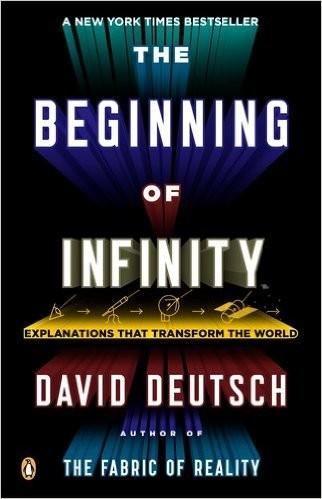
The Beginning of Infinity: Explanations That Transform the World
by
David Deutsch
Published 30 Jun 2011
That being so, if our species will nevertheless have a finite lifetime, then knowing the total number of humans who will ever live provides no upper bound on that lifetime, because it cannot tell us how long the potentially immortal humans of the future will live before the prophesied catastrophe strikes. In 1993 the mathematician Vernor Vinge wrote an influential essay entitled ‘The Coming Technological Singularity’, in which he estimated that, within about thirty years, predicting the future of technology would become impossible – an event that is now known simply as ‘the Singularity’. Vinge associated the approaching Singularity with the achievement of AI, and subsequent discussions have centred on that.
…
: Everett, Quantum Theory, and Reality (Oxford University Press, 2010) David Deutsch, ‘It from Qubit’, in John Barrow, Paul Davies and Charles Harper, eds., Science and Ultimate Reality (Cambridge University Press, 2003) David Deutsch, ‘Quantum Theory of Probability and Decisions’, Proceedings of the Royal Society A455 (1999) David Deutsch, ‘The Structure of the Multiverse’, Proceedings of the Royal Society A458 (2002) Richard Feynman, The Character of Physical Law (BBC Publications, 1965) Richard Feynman, The Meaning of It All (Allen Lane, 1998) Ernest Gellner, Words and Things (Routledge & Kegan Paul, 1979) William Godwin, Enquiry Concerning Political Justice (1793) Douglas Hofstadter, Gödel, Escher, Bach: An Eternal Golden Braid (Basic Books, 1979) Douglas Hofstadter, I am a Strange Loop (Basic Books, 2007) Bryan Magee, Popper (Fontana, 1973) Pericles, ‘Funeral Oration’ Plato, Euthyphro Karl Popper, In Search of a Better World (Routledge, 1995) Karl Popper, The World of Parmenides (Routledge, 1998) Roy Porter, Enlightenment: Britain and the Creation of the Modern World (Allen Lane, 2000) Martin Rees, Just Six Numbers (Basic Books, 2001) Alan Turing, ‘Computing Machinery and Intelligence’, Mind, 59, 236 (October 1950) Jenny Uglow, The Lunar Men (Faber, 2002) Vernor Vinge, ‘The Coming Technological Singularity’, Whole Earth Review, winter 1993 *The term was coined by the philosopher Norwood Russell Hanson. *This terminology differs slightly from that of Dawkins. Anything that is copied, for whatever reason, he calls a replicator. What I call a replicator he calls an ‘active replicator’.
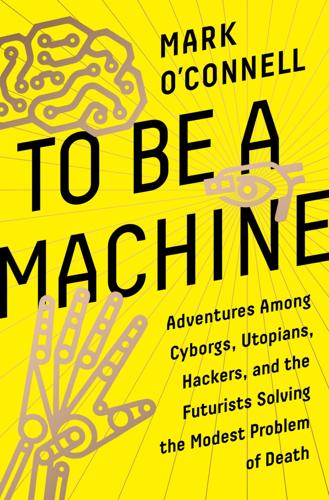
To Be a Machine: Adventures Among Cyborgs, Utopians, Hackers, and the Futurists Solving the Modest Problem of Death
by
Mark O'Connell
Published 28 Feb 2017
In his 1958 obituary for the physicist John von Neumann, with whom he had worked on the Manhattan Project, Stanislaw Ulam wrote about a conversation they once had about “the ever accelerating progress of technology and changes in the mode of human life, which gives the appearance of approaching some essential singularity in the history of the race beyond which human affairs, as we know them, could not continue.” The first substantial statement of the concept of a Technological Singularity is usually attributed to the mathematician and science fiction writer Vernor Vinge. In an essay called “The Coming Technological Singularity: How to Survive in the Post-human Era,” first delivered as a paper at a 1993 conference organized by NASA, Vinge claimed that “within thirty years, we will have the technological means to create superhuman intelligence. Shortly thereafter, the human era will be ended.” Vinge is ambivalent about the consequences of this great transcendence: it could mean the end of all our problems, or the annihilation of our species, but that it is coming is not seriously in doubt.
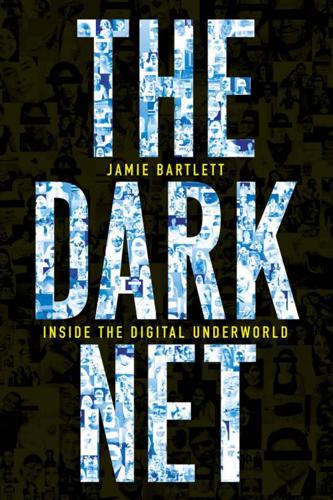
The Dark Net
by
Jamie Bartlett
Published 20 Aug 2014
More, M., ‘The Philosophy of Transhumanism’, in More, M. and Vita-More, N., The Transhumanist Reader: Classical and Contemporary Essays on the Science, Technology and Philosophy of the Human Future, p.4. p.223 ‘(Nick Bostrom, a well-known . . .’ http://www.nickbostrom.com/papers/history.pdf. p.224 ‘In 1993, Vernor Vinge popularised . . .’ ‘The Coming Technological Singularity: How to Survive in the Post-Human Era’, available here: https://www-rohan.sdsu.edu/faculty/vinge/misc/singularity.html; Good, I. J., ‘Speculations Concerning the First Ultraintelligent Machine’, Advances in Computers, vol.6. p.224 ‘By 1998, the burgeoning group . . .’ http://www.fhi.ox.ac.uk/a-history-of-transhumanist-thought.pdf; More, M. and Vita-More, N., The Transhumanist Reader, pp.54–5.

Cloudmoney: Cash, Cards, Crypto, and the War for Our Wallets
by
Brett Scott
Published 4 Jul 2022
I look through its window and see Apollo 11 images above a disused burger grill, while F-16 fighter jets land behind me on Moffett airfield, part of which is leased from NASA by Google. Here too, in this sprawling compound, is the Singularity University campus, founded by space entrepreneur Peter Diamandis and Ray Kurzweil, Google’s prophet of the coming technological ‘Singularity’. This is the idea that, through our enmeshed innovations, humans will trigger an ‘automation of automation’: a tipping point at which intelligent machines create other machines and give birth to a vast technological ‘super-intelligence’ that we can fuse with to become gods of our environment.
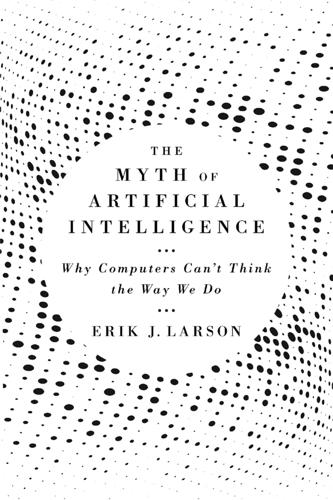
The Myth of Artificial Intelligence: Why Computers Can't Think the Way We Do
by
Erik J. Larson
Published 5 Apr 2021
Technically, Vinge introduced the term singularity three years earlier, in a January 1983 article in Omni magazine titled “First Word.” It is common, however, to trace the word and Vinge’s use of it back to his sci-fi book Marooned in Realtime, where the concept was fully developed in the plot of the story. 4. Vernor Vinge, “The Coming Technological Singularity: How to Survive in the Post-Human Era,” in Vision-21: Interdisciplinary Science and Engineering in the Era of Cyberspace, ed. G. A. Landis, NASA Publication CP-10129, 1993, 11–22. 5. Ray Kurzweil, The Singularity is Near: When Humans Transcend Biology (New York: Penguin Group, 2005). 6.

Singularity Rising: Surviving and Thriving in a Smarter, Richer, and More Dangerous World
by
James D. Miller
Published 14 Jun 2012
PRAISE FOR SINGULARITY RISING “There are things in this book that could mess with your head.” —Vernor Vinge, computer scientist; Hugo Award-winning author, A Fire Upon the Deep; essayist, “The Coming Technological Singularity” “The arrow of progress may kick upwards into a booming curve or it may terminate in an existential zero. What it will not do is carry on as before. With great insight and fore thought, Miller’s Singularity Rising prepares us for the forking paths ahead by teasing out the consequences of an artificial intelligence explosion and by staking red flags on the important technological problems of the next three decades.”

The Seventh Sense: Power, Fortune, and Survival in the Age of Networks
by
Joshua Cooper Ramo
Published 16 May 2016
(Turing’s rhyming computer, you have to suspect, could have done better.) One of the first speakers at the conference was a San Diego State University professor named Vernor Vinge, whose remarks that day marked the start of an important era in our consideration of smart machines. His talk was called “The Coming Technological Singularity: How to Survive in the Post-human Era.” “Within thirty years,” Vinge began, “we will have the technological means to create superhuman intelligence. Shortly after, the human era will be ended.” Vinge’s aim was not—or at least not merely—to tell a room full of NASA geeks who had been dreaming of life on another planet that life on our own planet might soon be replaced by whirring, calculating machines.

The Big Nine: How the Tech Titans and Their Thinking Machines Could Warp Humanity
by
Amy Webb
Published 5 Mar 2019
New York: Random House, 1972. Turing, A. M. “Intelligent Machinery, a Heretical Theory.” Posthumous essay in Philosophia Mathematica 4, no. 3 (September 1, 1996): 256–260. Tversky, A., and D. Kahneman. “The Framing of Decisions and the Psychology of Choice.” Science 211, no. 4481 (1981). Vinge, V. “The Coming Technological Singularity: How to Survive in the Post-Human Era.” In Vision-21: Interdisciplinary Science and Engineering in the Era of Cyberspace, NASA Conference Publication 10129 (1993): 11–22. http://ntrs.nasa.gov/archive/nasa/casi.ntrs.nasa.gov/19940022855_1994022855.pdf. Wallach, W., and C. Allen. Moral Machines: Teaching Robots Right from Wrong.
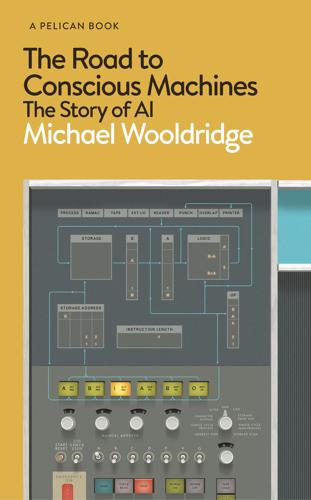
The Road to Conscious Machines
by
Michael Wooldridge
Published 2 Nov 2018
Emerald, 2018. 10. https://corporate.ford.com/innovation/autonomous-2021.html. 11. https://www.riotinto.com/media/media-releases-237_23991.aspx. * * * CHAPTER 7: HOW WE IMAGINE THINGS MIGHT GO WRONG 1. http://tinyurl.com/ybsrkr4a. 2. R. Kurzweil. The Singularity is Near. Penguin, 2005. 3. V. Vinge. ‘The Coming Technological Singularity: How to Survive in the Post-Human Era’. NASA Lewis Research Center, Vision 21: Interdisciplinary Science and Engineering in the Era of Cyberspace, pp. 11–22. 4. T. Walsh. ‘The Singularity May Never Be Near’. arXiv:1602.06462v1. 5. https://tinyurl.com/y622vm6k. 6. D. S. Weld and O.

Global Catastrophic Risks
by
Nick Bostrom
and
Milan M. Cirkovic
Published 2 Jul 2008
Thompson, D. ( 1 997). The End of Time: Faith and Fear in the Shadow of the Millennium ( Hanover, N H : University Press of New England) . Tuveson, E.L. ( 1 949) . Millennium and Utopia: A Study in the Background of the Idea of Progress (Berkeley, CA: University of California Press). Vinge, V. ( 1 993). The Coming Technological Singularity: How to Survive in the Post Human Era. Presented at the V I S ION-21 Symposium sponsored by NASA Lewis Research Center and the Ohio Aerospace Institute, 30-31 M arch 1 993. http: ( fwww rohan. sdsu. eduf facultyfvinge fmiscf singularity.html Wagar, W.W. ( 1982). Terminal Visions: The Literature of Last Things (Bloomington: Indiana University Press).
…
Tooby, J . and Cosmides, L. ( 1992). The psychological foundations ofculture. In Barkow, J . H . , Cosmides, L. and Tooby, J. (eds.), The Adapted Mind: Evolutionary Psychology and the Generation of Culture, (New York: Oxford University Press). Artificial Intelligence in global risk 345 Vinge, V. (March 1 993). The Coming Technological Singularity. Presented at the VIS ION-21 Symposium, sponsored by NASA Lewis Research Center and the Ohio Aerospace Institute. Wachowski, A. and Wachowski, L. ( 1 999). The Matrix (Warner Bros, 1 3 5 min, U SA). Weisburg, R. (1986). Creativity, Genius and Other Myths (New York: W.H. Freeman). Williams, G.C. (1966) .
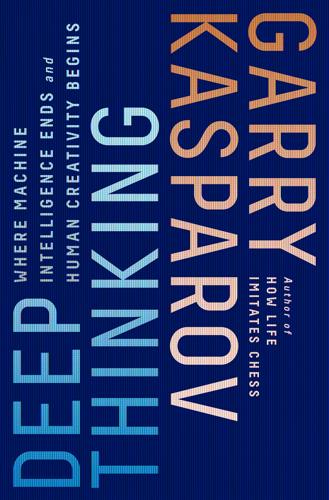
Deep Thinking: Where Machine Intelligence Ends and Human Creativity Begins
by
Garry Kasparov
Published 1 May 2017
Ian Goldin wrote an important book, Age of Discovery: Navigating the Risks and Rewards of Our New Renaissance, and left Oxford Martin in mid-2016. The new director is Achim Steiner. “the world will pass far beyond our understanding.” Vernor Vinge in an op-ed in Omni magazine, January 1983. “we will have the technological means to create superhuman intelligence.” Vernor Vinge, “The Coming Technological Singularity: How to Survive in the Post-Human Era,” originally in Vision-21: Interdisciplinary Science and Engineering in the Era of Cyberspace, G. A. Landis, ed., NASA Publication CP-10129, 11–22, 1993. in real life things are far more complex. Asimov’s Three Laws of Robotics: “A robot may not injure a human being or, through inaction, allow a human being to come to harm.

Machines of Loving Grace: The Quest for Common Ground Between Humans and Robots
by
John Markoff
Published 24 Aug 2015
(New York: Simon & Schuster, 2014), Kindle location 222–230. 34.Tim O’Reilly, Google+, January 9, 2014, https://plus.google.com/+TimOReilly/posts/F85gaWoBp3Z. 35.Matthieu Pélissié du Rausas, James Manyika, Eric Hazan, Jacques Bughin, Michael Chui, and Rémi Said, “Internet Matters: The Net’s Sweeping Impact on Growth, Jobs, and Prosperity,” McKinsey Global Institute, May 2011, http://www.mckinsey.com/insights/high_tech_telecoms_internet/internet_matters. 36.“The Last Kodak Moment?” Economist, January 12, 2012, http://www.economist.com/node/21542796. 37.Ray Kurzweil, The Singularity Is Near: When Humans Transcend Biology (New York: Penguin Books, 2006). 38.“The Coming Technological Singularity: How to Survive in the Post-Human Era,” VISION-21 Symposium, NASA Lewis Research Center, NASA technical reports, NASA CP-10129, March 30–31, 1993, https://www-rohan.sdsu.edu/faculty/vinge/misc/singu larity.html. 39.Robert Geraci, Apocalyptic AI: Visions of Heaven in Robotics, Artificial Intelligence, and Virtual Reality, reprint edition (New York: Oxford University Press, 2012). 40.Moshe Y.

Robot Rules: Regulating Artificial Intelligence
by
Jacob Turner
Published 29 Oct 2018
Ruminoff, Vol. 6 (New York: Academic Press, 1965). 106Nick Bostrom, “How Long Before Superintelligence?”, International Journal of Future Studies, 1998, vol. 2.. 107 The singularity was conceived of shortly after the advent of modern AI studies, having been introduced by John von Neumann in 1958 and then popularised by Vernor Vinge, in “The Coming Technological Singularity: How to Survive in the Post-human Era” (1993), available at: https://edoras.sdsu.edu/~vinge/misc/singularity.html, accessed 22 June 2018 and subsequently by Ray Kurzweil, The Singularity Is Near: When Humans Transcend Biology (New York: Viking Press, 2005). 108In 1968, a Scottish chess champion bet AI pioneer John McCarthy £500 that a computer would not be able to beat him by 1979.
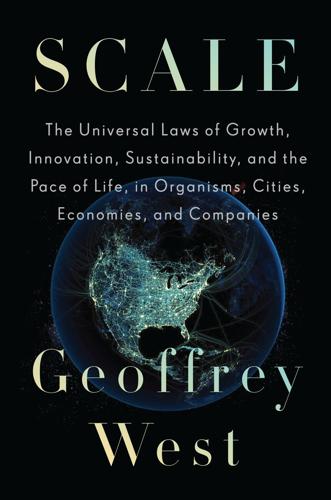
Scale: The Universal Laws of Growth, Innovation, Sustainability, and the Pace of Life in Organisms, Cities, Economies, and Companies
by
Geoffrey West
Published 15 May 2017
Arthur, The Nature of Technology: What It Is and How It Evolves (New York: Free Press, 2009); H. Youn, et al., “Invention as a Combinatorial Process: Evidence from U.S. Patents,” Journal of the Royal Society Interface 12 (2015): 20150272. 5. R. Kurzweil, The Singularity Is Near: When Humans Transcend Biology (New York: Viking, 2005). 6. V. Vinge, “The Coming Technological Singularity: How to Survive in the Post-Human Era,” Whole Earth Review (1993). 7. This is quoted by the great mathematician Stanislaw Ulam in a eulogy to von Neumann following his death in 1957: “Tribute to John von Neumann,” Bulletin of the American Mathematical Society 5(3), part 2 (1958): 64. 8.

Why Stock Markets Crash: Critical Events in Complex Financial Systems
by
Didier Sornette
Published 18 Nov 2002
Varian, H. R. (1989). Difference of opinion in financial markets, in Financial Risk: Theory, Evidence and Implications, Proceedings of the Eleventh Annual Economic Policy Conference of the Federal Reserve Bank of St. Louis, Courtenay C. Stone, editor (Kluwer, Boston). 438. Vinge, V. (1993). The Coming Technological Singularity: How to Survive in the Post-Human Era, available at http://www.aleph.se/Trans/Global/Singularity/ sing.html, presented at the VISION-21 Symposium sponsored by NASA Lewis Research Center and the Ohio Aerospace Institute, March 30–31, 1993. 439. Visser, W. (1997). Can the casino economy be tamed?

Superintelligence: Paths, Dangers, Strategies
by
Nick Bostrom
Published 3 Jun 2014
“Artificial Intelligence: Past and Future.” Communications of the ACM 55 (1): 5. Vassar, Michael, and Freitas, Robert A., Jr. 2006. “Lifeboat Foundation Nanoshield.” Lifeboat Foundation. Retrieved May 12, 2012. Available at http://lifeboat.com/ex/nanoshield. Vinge, Vernor. 1993. “The Coming Technological Singularity: How to Survive in the Post-Human Era.” In Vision-21: Interdisciplinary Science and Engineering in the Era of Cyberspace, 11–22. NASA Conference Publication 10129. NASA Lewis Research Center. Visscher, P. M., Hill, W. G., and Wray, N. R. 2008. “Heritability in the Genomics Era: Concepts and Misconceptions.”

The Innovators: How a Group of Inventors, Hackers, Geniuses and Geeks Created the Digital Revolution
by
Walter Isaacson
Published 6 Oct 2014
Beau Cronin of O’Reilly Media has proposed a drinking game: “take a shot every time you find a news article or blog post that describes a new AI system as working or thinking ‘like the brain’ ” (http://radar.oreilly.com/2014/05/it-works-like-the-brain-so.html), and he maintains a pinboard of stories making such claims (https://pinboard.in/u:beaucronin/t:like-the-brain/#). 18. Author’s interview with Tim Berners-Lee. 19. Vernor Vinge, “The Coming Technological Singularity,” Whole Earth Review, Winter 1993. See also Ray Kurzweil, “Accelerating Intelligence,” http://www.kurzweilai.net/. 20. J. C. R. Licklider, “Man-Computer Symbiosis,” IRE Transactions on Human Factors in Electronics, Mar. 1960. 21. Kelly and Hamm, Smart Machines, 7. 22. Kasparov, “The Chess Master and the Computer.” 23.

The Singularity Is Near: When Humans Transcend Biology
by
Ray Kurzweil
Published 14 Jul 2005
Vernor Vinge, "First Word," Omni (January 1983): 10. 20. Ray Kurzweil, The Age of Intelligent Machines (Cambridge, Mass.: MIT Press, 1989). 21. Hans Moravec, Mind Children: The Future of Robot and Human Intelligence (Cambridge, Mass.: Harvard University Press, 1988). 22. Vernor Vinge, "The Coming Technological Singularity: How to Survive in the Post-Human Era," VISION-21 Symposium, sponsored by the NASA Lewis Research Center and the Ohio Aerospace Institute, March 1993. The text is available at http://www.KurzweiW.net/vingesing. 23. Ray Kurzweil, The Age of Spiritual Machines: When Computers Exceed Human Intelligence (New York: Viking, 1999). 24.

Artificial Intelligence: A Modern Approach
by
Stuart Russell
and
Peter Norvig
Published 14 Jul 2019
Verma, S. and Rubin, J. (2018). Fairness definitions explained. In 2018 IEEE/ACM International Workshop on Software Fairness. Verma, V., Gordon, G., Simmons, R., and Thrun, S. (2004). Particle filters for rover fault diagnosis. IEEE Robotics and Automation Magazine, June. Vinge, V. (1993). The coming technological singularity: How to survive in the post‑human era. In Proc. Vision‑21: Interdisciplinary Science and Engineering in the Era of Cyberspace. NASA. Vinyals, O., Babuschkin, I., Czarnecki, W. M., Mathieu, M., Dudzik, A., Chung, J., Choi, D. H., Powell, R., Ewalds, T., Georgiev, P., Hassabis, D., Apps, C., and Silver, D. (2019).